#the Florida museum of natural history
Explore tagged Tumblr posts
Text

Frog stuck in amber. 99 million years ago.
Credit: https://www.floridamuseum.ufl.edu/science/amber-fossils-oldest-frogs-tropical-forests/
#extinct animals#frog#animals in art#ancient history#prehistory#prehistoric#the Florida museum of natural history#natural history#science#archaeology#archeology#paleontology
9 notes
·
View notes
Text
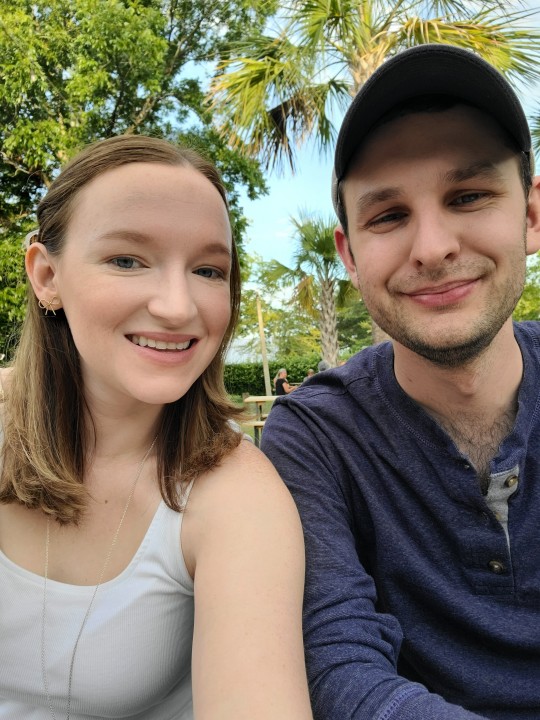

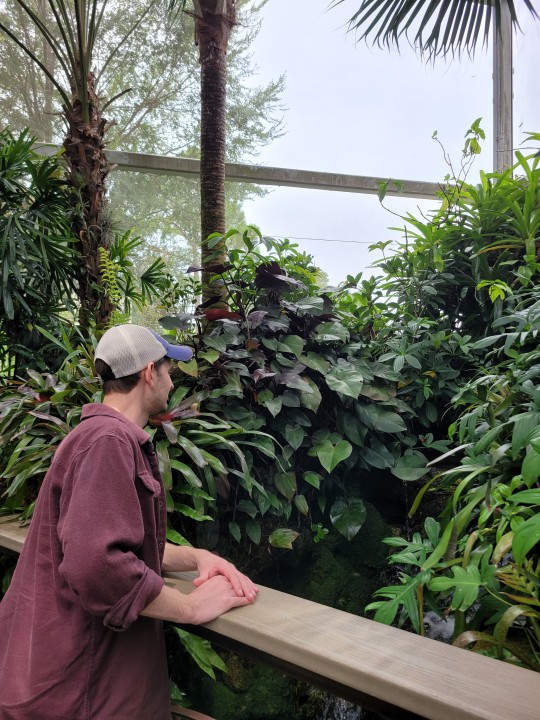
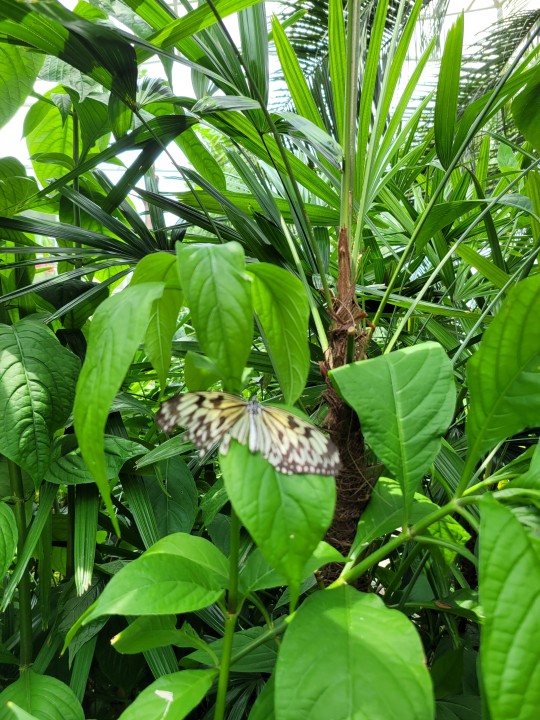
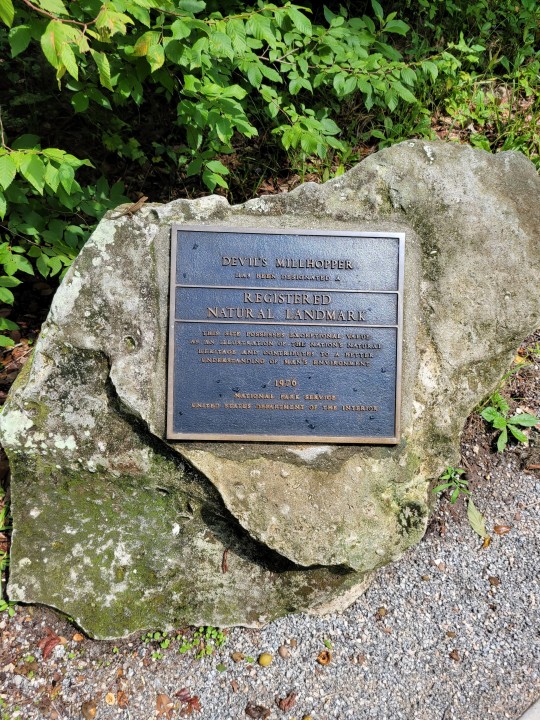
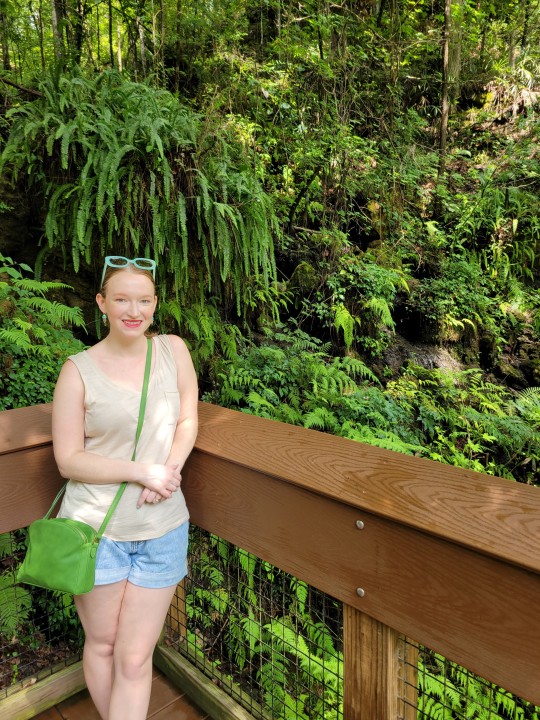
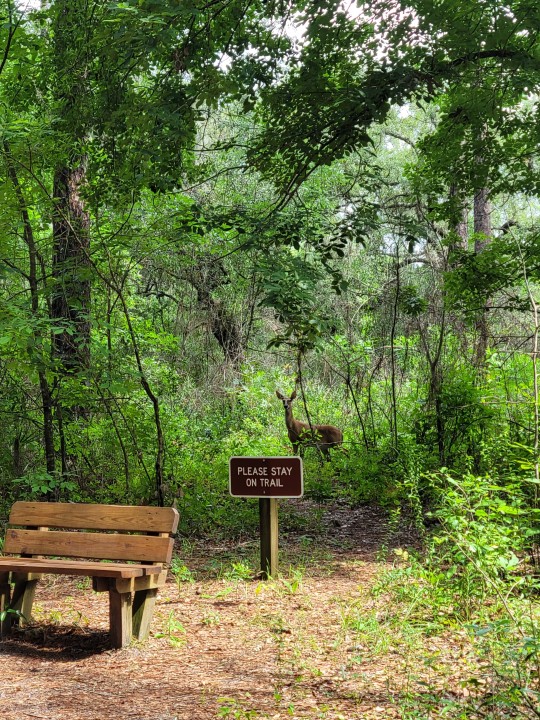
We had a wonderful time exploring in nature in Gainesville. The butterfly house at the Natural History Museum is a must see! Plus we visited Devils Millhopper State Park where we got to see and 10,000 year old sinkhole. On our hike there, we even saw a deer up close! It was a magical trip.
#i am constantly reminded that sometimes florida is pretty cool#travel#florida#gainesville#the swamp#natural history museum#butterfly house#butterfly#devils millhopper#state park#nature walk#hike
5 notes
·
View notes
Photo
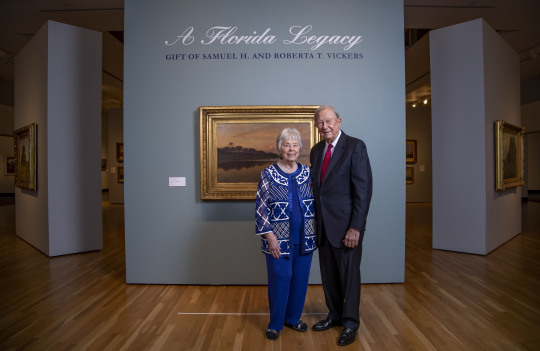



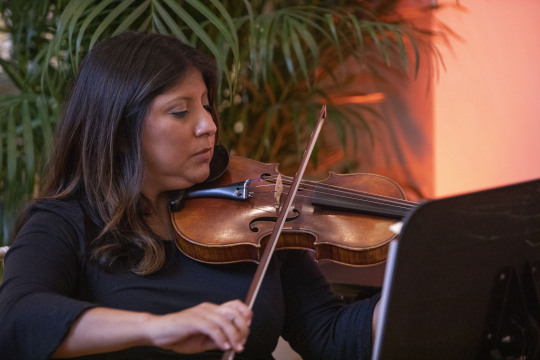
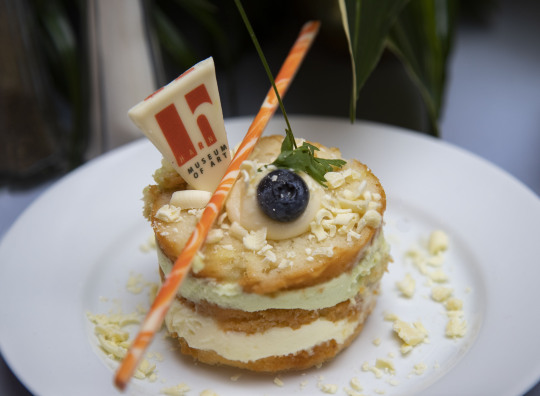

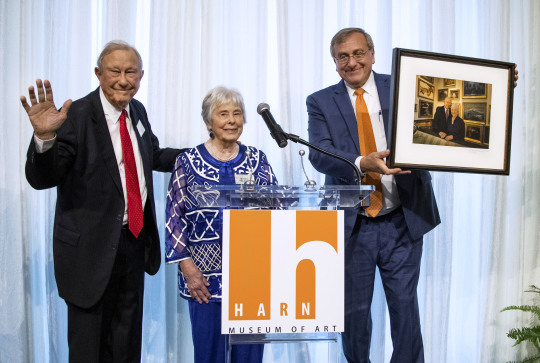

Vickers Family Reception at the Harn Museum
Surrounded by family and friends, Samuel and Roberta Vickers celebrate the opening "A Florida Legacy: Gift of Samuel H. and Roberta T. Vickers” exhibit showcasing the Vickers family over 140 piece art collection gifted during a reception for the to the Harn Museum of Art at the University of Florida.
“The Vickers Collection is unique in its power to convey both the exquisite natural beauty and the rich history of people in Florida — the ruggedness and grandeur of its landscapes and the highs and lows of its human history through the centuries,” UF President Kent Fuchs said. “Sam and Robbie have shared a treasure with us, and we are thrilled to have the privilege of sharing their collection in turn with all visitors to the Harn Museum.”
As an integral part of the University of Florida campus, the Harn Museum of Art will share the Vickers’ gift as an important new resource to strengthen faculty collaboration, support teaching and enhance class tours, and provide research projects for future study. “A Florida Legacy” is organized along six thematic sections that address many prominent subjects represented in the Vickers Collection: nature, history, landmarks, diversions, living and impressions.
The “Florida Nature” section includes iconic views of Florida forests, beaches and wetlands.
The “Florida History” section includes nineteenth-century drawings of important figures in Seminole history, an early map of Florida, and early depictions of historic cities such as St. Augustine.
The “Florida Landmarks” section showcases views of historic forts, town squares and city parks in a number of cities across the state.
The “Florida Diversions” section features familiar sites such as people enjoying themselves at crowded beaches and at popular destinations such as racetracks, Silver Springs, and the Everglades.
The “Florida Living” section focuses on Florida scenery, domestic architecture and scenes of daily life.
Lastly, the “Florida Impressions” includes lively sketches on paper that were created “on the spot” and represent the artists’ immediate, personal responses to their Florida subjects.
#Vickers Family#samuel vickers#roberta vickers#family#reception#President Kent Fuchs#President Bernie Machen#sam vickers#robbie vickers#the florida legacy#Harn Museum#Harn Museum of Art#gainesville#florida#nature#history#landmarks#diversions#living#impressions#event photography#aaron daye photography
0 notes
Text
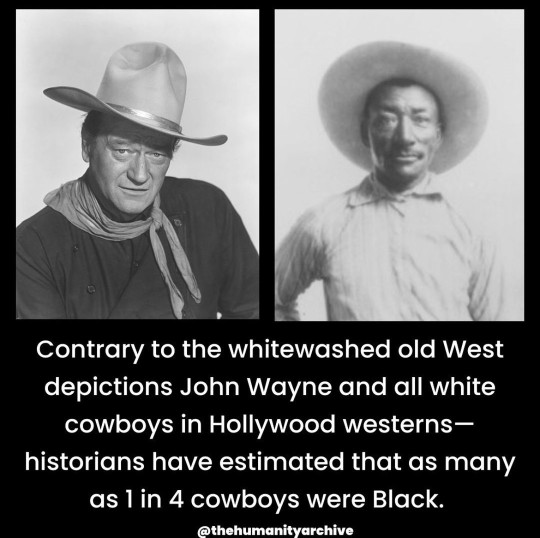
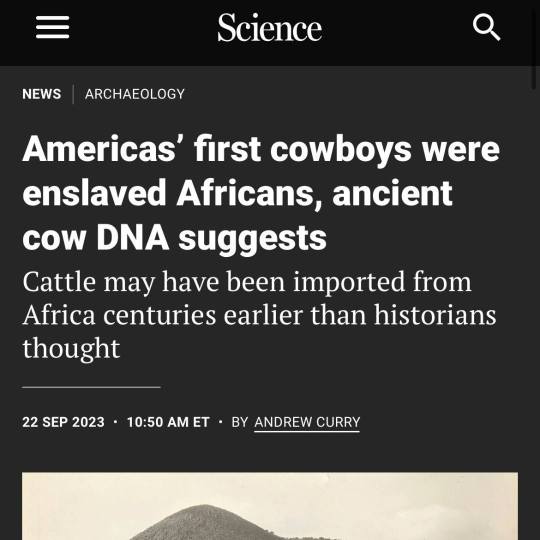
"...the first cowboys lived in Mexico and the Caribbean, and most of them were Black. That’s the conclusion of a recent analysis of DNA from 400-year-old cow bones excavated on the island of Hispaniola and at sites in Mexico. The work, published in Scientific Reports, also provides evidence that African cattle made it to the Americas at least a century earlier than historians realized. The timing of these African imports—to the early 1600s—suggests the growth of cattle herds may have been connected to the slave trade, says study author Nicolas Delsol, an archaeozoologist at the Florida Museum of Natural History. “It changes the whole perspective on the mythical figure of the cowboy, which has been whitewashed over the 20th century.”
x
#cowboys#african heritage#caribbean history#mexican history#dna analysis#historical perspective#slave trade#cattle herds#cultural reevaluation#17th century#black cowboys#early americas#black history
409 notes
·
View notes
Text
Leafcutter Bees: these bees snip off bits of foliage and/or flower petals and then weave the pieces together to build their nests
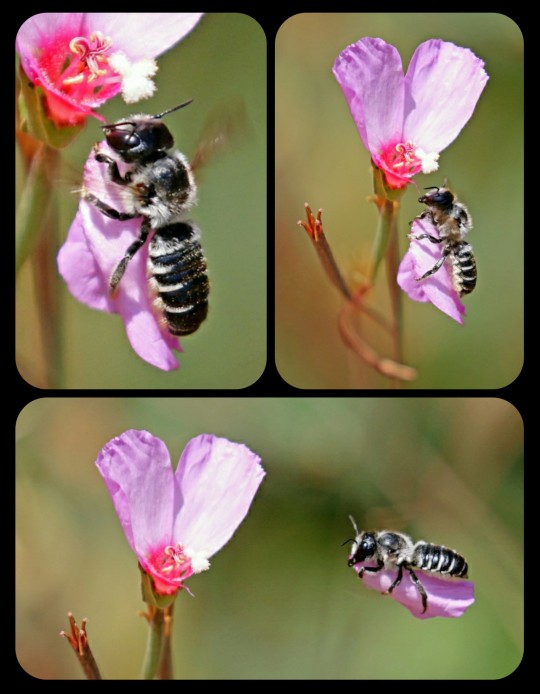
The nests are built and used only by the female leafcutter bees (family Megachilidae). Unlike honey bees, leafcutters do not form colonies or live together in hives, meaning that each nest belongs to a single, solitary bee.
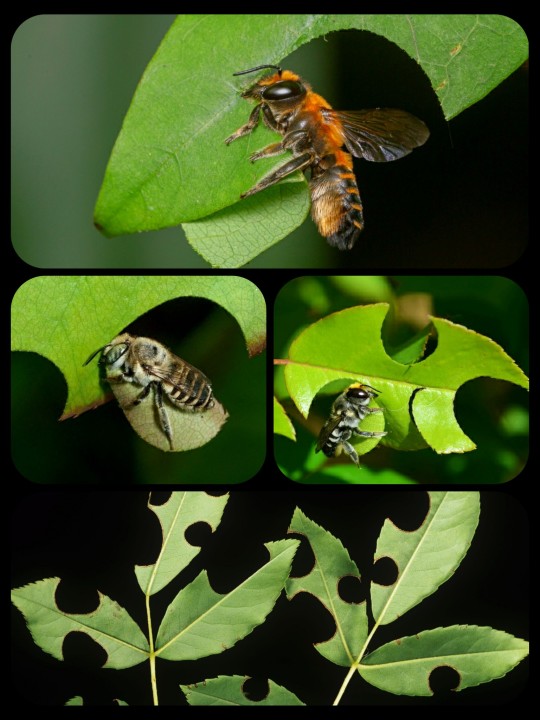
The females use their mandibles to cut out pieces of foliage, carefully snipping off rounded segments and then carrying them back to an existing cavity/burrow (which may be located in a plant stem, a piece of wood, the side of a tree, etc.), where the pieces are used to construct a series of brood cells along the inner walls of the cavity.
Most leafcutter bees build their nests out of leaves, but there are some species that are more accurately described as "petalcutters," because they use flower petals instead.
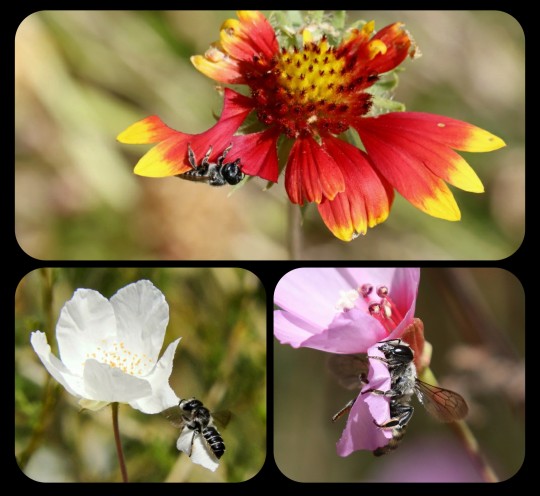
The Silver-Tailed Petalcutter Bee (M. montivaga): this species uses flower petals to build its nest; it is one of the few Megachilid bees to do so
The leaves and/or flower petals are then folded together along the inner walls of the chamber, forming a long, cigar-shaped nest that contains multiple brood cells.
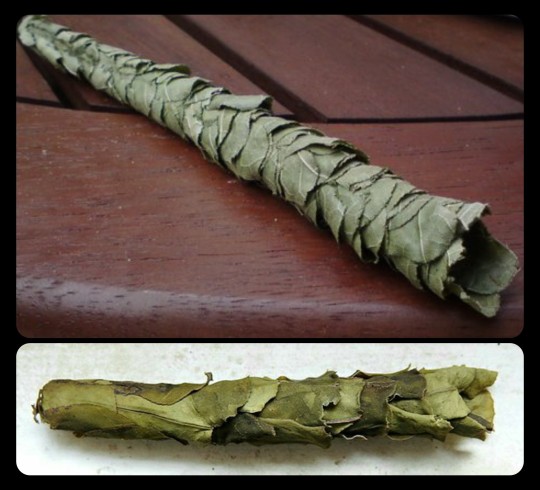
As this article explains:
Leafcutter bees may nest in many different spaces, such as existing holes in timber or masonry, hollow stems, gaps in door/window frames, old folded towels left outside, rock walls and outdoor furniture.
Each female builds her own nest. The cut leaves are used to make a tube as a nest for the eggs or to line an existing hole with it. The leaves are cut in various shapes, round and elongated, to suit the construction of the cell for the eggs. The cell is then stocked with a mixture of nectar and pollen in which the leafcutter bee lays her eggs.
There are multiple brood cells built into the internal structure of the nest, but they are all separate from one another. Each cell contains a single egg, along with just enough pollen and nectar to sustain the larva until it reaches maturity.
When the eggs hatch, tiny larvae eat the provisions and, when fully grown, they spin silky cocoons and then develop into pupae, finally emerging as adult bees.
Leafcutter bees come in a wide variety of colors, shapes, and sizes. These are just a few other examples:
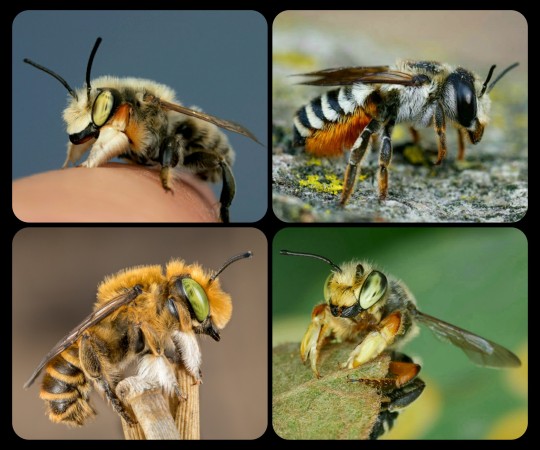
Top Row (left-to-right): Megachile latimanus and Megachile octosignata; Bottom Row: Megachiloides sp. and Megachile poeyi
Sources & More Info:
University of Colorado's Museum of Natural History: Leafcutting Bee
Florida Wildflower Foundation: Getting to Know your Native Pollinators - Leafcutter Bees
University of Nebraska: Facts about the Leafcutter Bee
Land for Wildlife (Southeast Queensland): Leafcutter Bees
What's that Bug?: Leafcutter Bee Life Cycle - a Fascinating Journey Revealed
Entomology Today: Beyond the Honey Bee - How Pesticides Affect Solitary, Cavity-Nesting Bees
#entomology#insects#nature#hymenoptera#arthropods#megachile#megachilidae#leafcutter bees#petalcutter bees#animals#biology#flowers#cute bugs#bees#solitary bees#gardening#plants#cute animals#bugs that like to pick flowers#to decorate their homes
64 notes
·
View notes
Text
My introduction!!
Hello! My name is Micaelyn. I’m female and a minor. I go by she/her! | I am a Lesbian | Welcome to my science-centric blog where I’ll be sharing an assortment of facts, extensive information, and artwork! Consider this blog as my info-dump haven.
Fixations / things I generally like
Science! But specifically: Marine biology, chemical oceanography, Microbiology and genetics.
Birds! I favor Turkey vultures, Greater roadrunners, Storm petrels (Wilson’s), Alcids, African+King penguins, Montezuma Quails, Kea’s and Kakapos. I also like bats. My favorite species is the Indian flying fox.
Killer whales (I love the southern residents) Fun fact: I adopted J-35 Tahlequah from the whale museum last year!
Elasmobranchs, particularly Bluntnose Six-gill, Bamboo, and Scalloped Hammerhead sharks, as well as Spotted Eagle rays. Cephalopods also intrigue me, with the blanket octopus being my favorite.
The Geologic Time Scale, especially the Cambrian and Carboniferous period. I’ve committed to memory most of the Eras and periods within the Phanerozoic Eon! I love learning about earths evolutionary history :3
Dinosaurs! My top three are Carnotaurus, Spinosaurus and parasaurolophus!
I love Nature photography! I am a nature photographer myself, I photograph mostly birds but I've also photographed different whales and flowers. I shoot with a Canon EOS R7 paired with the RF 100-500mm lens.
Fun facts about me
I’m a Pisces (Birthday is March 1st). I can speak a little Norwegian. I am a nature informed illustrator. I collect shark teeth, shells and other coastal items. Lastly I volunteer at an aquarium and I’m a member of the Florida Young birders club.
My tags
Art: #Micaelyn art
Info-dumping: #Micaelyn info dumps
Inbox msgs: #Micaelyn inbox
Marine biology#Marine biology
Check for more specific tags by searching my blog!
Socials
TikTok: https://www.tiktok.com/@moonsnails_?_t=8qq7tnshYh4&_r=1
Instagram: https://www.instagram.com/_moonsnails/profilecard/?igsh=bzU5MHVjZ3prMjIx
Pinterest: https://pin.it/581OVjYUY
Letterboxd: https://boxd.it/bdTNX
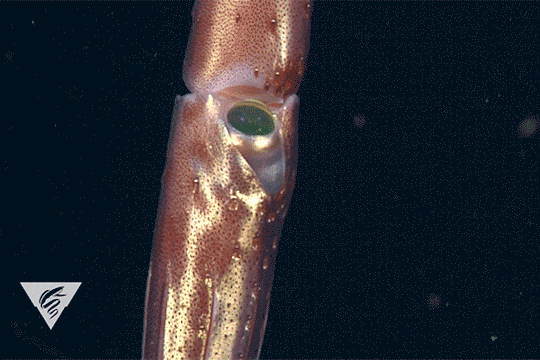
#introduction#science#scienceblr#marine biology#birds#ornithology#art#bats#nerd#nature lovers#science nerd#stemblr
15 notes
·
View notes
Text
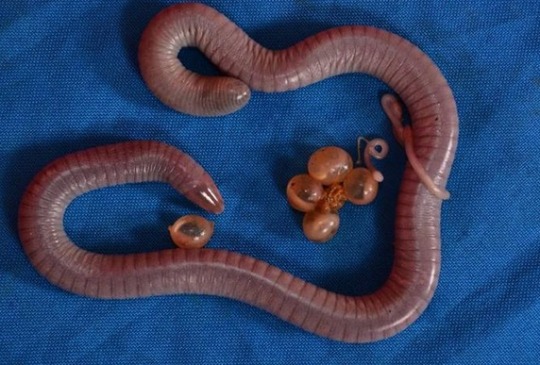
Caecilians are first amphibians shown to pass microbes to their offspring
FLORIDA MUSEUM OF NATURAL HISTORY
KOUETE ET AL., 2023
Caecilians are an elusive type of amphibian that primarily live underground and look like a cross between a worm and a snake. One of the few things that is known about caecilians is their unique method for feeding their young. Mothers produce a special layer of fatty skin tissue, which juvenile caecilians tear off with baby teeth that evolved specifically for that purpose. A new study shows that skin-feeding does more than provide nutrients for young caecilians. It also helps the mother pass microbes from her skin and gut down to her young, inoculating them to jump-start a healthy microbiome. This is the first direct evidence that parental care in an amphibian plays a role in passing microbes from one generation to the next...
Read more: https://www.eurekalert.org/news-releases/996426
image: Herpele squalostoma, from central Africa
98 notes
·
View notes
Text

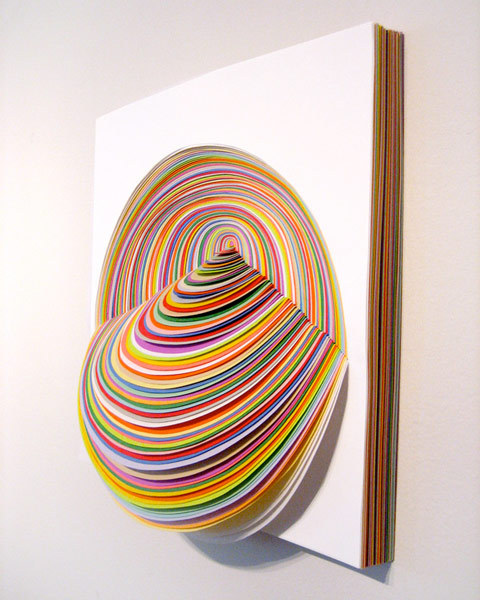
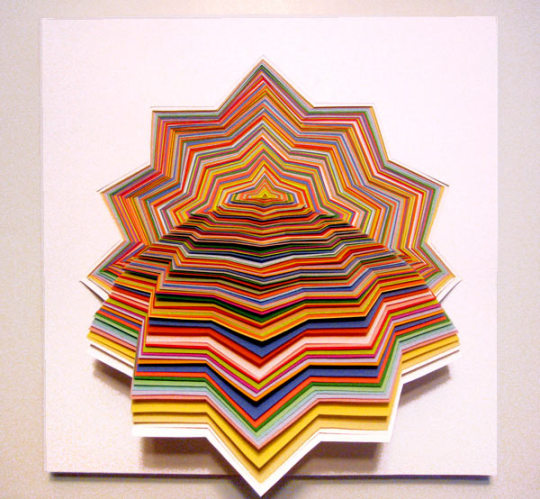

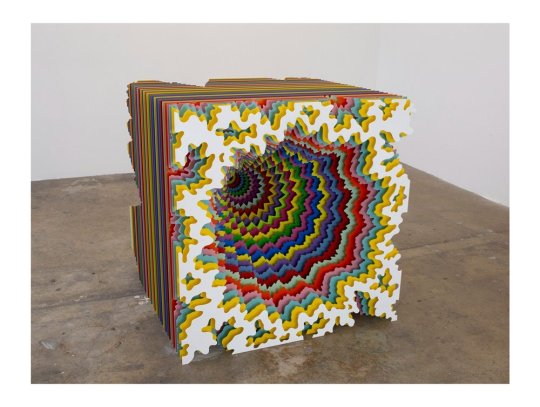
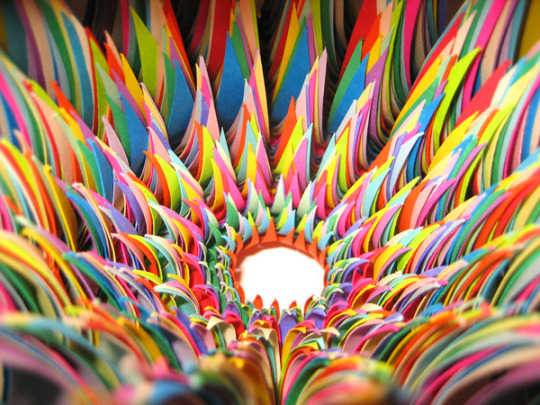

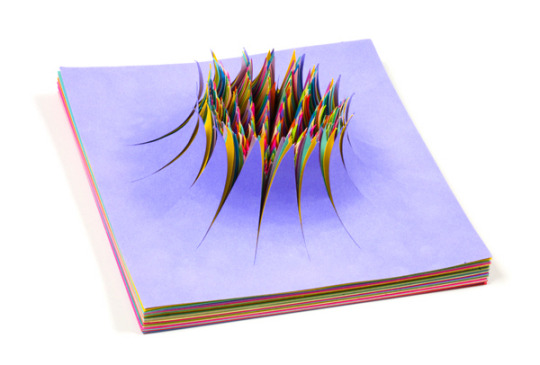
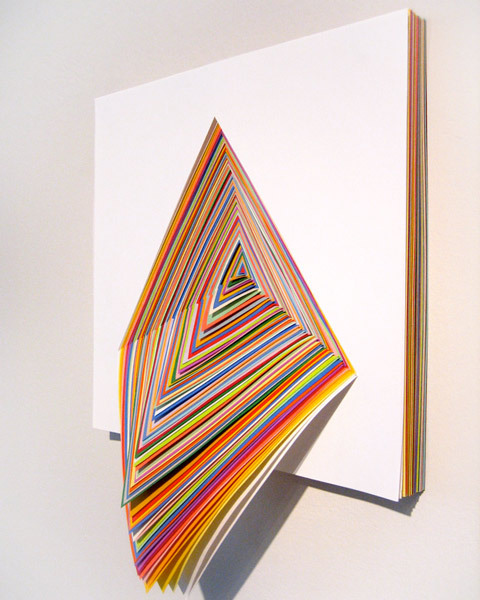
Jen Stark’s art is driven by her interest in conceptualizing visual systems to simulate plant growth, evolution, infinity, fractals, mimetic topographies, and sacred geometries. Using available materials—paper, wood, metal, paint—Stark strives to make work that balances on a razor’s edge of optical seduction and perceptual engagement. In recent years, Stark has introduced new technologies into her diverse practice, delving into the digital realm of interactive projections and distinctive NFTs.
The resulting works often resemble organic, molecular, cloud-like structures, and are imbued with kinetic, undulating effects that serve to dislocate the viewer from staid reality into an immersive ecosphere of echoing patterns and the implausible designs found in nature. Even her vivid colors are in direct conversation with the natural world; the attractant/repellent properties of flowers encouraging pollination or insects warning birds of their poisonous traits, and the luminous mystery of phosphorescent sea creatures are among Stark’s concerns.
Via these corporeal abstractions, spectators are led onto the astral plane; there’s a transcendence to Stark’s work where the vibrational phases become a sacrosanct and curative experience for the viewer. Traces of mandalas or nautili reveal themselves as sacred geometric forms in Stark’s spiritual reservoir.
Stark’s ability to create atmospheric, minimal, naturalist configurations that only reveal themselves after deep engagement align her with the artistic legacies of Yayoi Kusama, Sol Lewitt, Tara Donovan, Tom Friedman, Andy Goldsworthy, Ernst Haeckel, and the Finish Fetish artists of 1960s Los Angeles.
Not limited to the confines of museums and galleries, Stark’s diverse practice—a series of sculptural objects that rely on a commitment to process and hypnotic repetition; charismatic wall works; widely seen murals; intricately animated films; NFTs (non-fungible tokens) and interactive projections—has been exhibited throughout the world, permeating both the physical and digital realms. By adopting cutting-edge techniques to showcase her aesthetic, Stark activates her universe through constant adaptation and transformation.
Stark was born in Miami, Florida in 1983, and studied at the Maryland Institute College of Art, graduating in 2005. Since then, Stark has realized exhibitions globally, with major shows in New York, Los Angeles, Miami, Chicago, Thailand, and Canada. Recently included as one of Fortune’s “NFTy 50,” Stark made history as the first female artist to make Foundation’s top 10 highest selling NFT creatives. Her work is in the collections of the Smithsonian American Art Museum, the West Collection, Crystal Bridges Museum of American Art, NSU Art Museum and MOCA Miami, among others.
Stark lives and works in Los Angeles. Part1 Part2
#sculpture #sculptureart #sculptureartist #sculptures #sculpturelovers #sculptureoftheday #sculpturepark #sculpture_art #sculpturegallery #sculpturesofinstagram #sculpture_gallery #sculpturesurbois #contemporarysculpture #sculpturecontemporaine #sculpturephotography #sculptured #modernsculpture #abstractsculpture #handsculpture @frenchpsychiatrymuderedmycnut 🌈 #artsculpture #instasculpture #skulptur #skulpturen #skulpturer #skulpturensammlung #skulptures #skulptūra #skulpturia #skulpturenausstellung
Soundtrack: I Feel Space by Lindstrøm 🌈

#l o v e#Jen Stark#5/2023#artist of the day#Pop art#rainbow#rainbow warriors#sculptor#sculptures#female artists#female artwork#female art#newcontemporary#new contemporary#new contemporary art#x-heesy#fucking favorite#now playing#music and art#contemporaryart#🌈#symmetry#pattern
107 notes
·
View notes
Text
I'm working on a new posting schedule, so I am very interested in what other things people may be interested in seeing.
#logan.yaps#coasterblr#blog interest#poll meme#tumblr polls#curious#followers please respond#mutuals#followers#content#photography#my photography#motorsports photography
7 notes
·
View notes
Text

Calusa chief. 1500s to 1700s CE. Florida.
The Florida Museum of Natural History.
#native history#native american history#Florida#indigenous history#indigenous#early modern period#early modern history#Calusa
9 notes
·
View notes
Photo
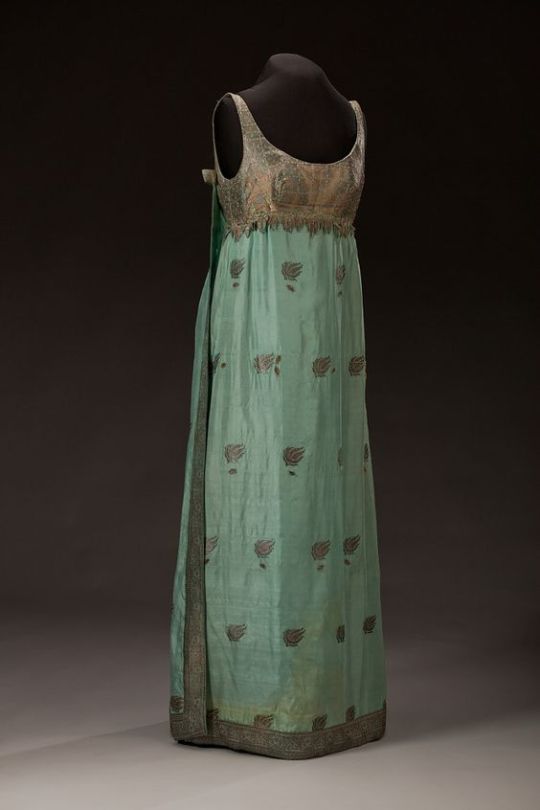
Dress
Ann Lowe, 1960s
Smithsonian National Museum of African American History and Culture
Green means nature.
Central Florida Emergency Trans Care Fund
Equality Florida
ACLU Florida
Tampa Bay Abortion Fund
116 notes
·
View notes
Text
Beach trip day two!
We got up and walked down to the beach behind the motel:

It's another gorgeous, unseasonably warm day on the Cape May peninsula! (Yeah, I know, but when global warming gives you a day of lovely beach weather at the end of October, it's not like abstaining from enjoying it helps in any way.)
Up on the deck for a little breakfast:

Our first stop was the Cape May Nature Center, which didn't have a whole lot going on this time of year, but the gift shop was great, and it had a few exhibits and a nice deck for looking out at the harbor:

We took a walk around the harbor, taking in the Fishermen's Memorial, honoring fishermen lost at sea:

The earliest names are from 1897, and the latest from 2020:

Then we ended up over at the marina where the fishing boats live:

The nature center has a beach wheelchair!

I didn't see any information on how one gets to use it, but if you or anyone you know uses a wheelchair and wants to go to Cape May, maybe give them a call and ask.
Next we drove through downtown Cape May, ending up at Cove Beach, which is the last of the city beaches. I got lunch at a little beach-shack type restaurant:

The fries were nothing impressive, but those were some of the best fried shrimp I've ever had.
By this point in the trip, Sophie had come to the conclusion that she likes best the part of the beach that isn't too close to the ocean, so she hung out in the car and ate French fries while I went wading on Cove Beach:

In the distance there you can see the Cape May lighthouse, which is our main destination for the day. But first, let's turn back and look at the restaurant:

It's the long, low building with the red roof. (No idea why those people are bundled up like that, unless maybe they're from Florida or something. It was about 70 degrees out. (Or 21-ish, Celsius).
After Cove Beach, we drove on to Cape May Point state park, where the lighthouse is. Since Sophie was going to skip the lighthouse climb too, we started with a nice walk on the dry part of the beach at the park, out to the World War II Bunker:

This is a big concrete structure on the beach, now unsafe and boarded up, that was part of the area's coastal defenses. There's also a lookout tower over by Sunset Beach (where we were for the sunset the previous night), but we skipped that. In the background, you can see the lighthouse!
Here's the ocean and a jetty or something:

And Sophie watching while I go onto the dangerously damp part of the beach:

We exited the beach on the far side of the bunker from where we entered, and walked back via a path that ran between the dunes and this pond:

Which was full of swans. There was also a snowy egret, and a lot of other birds I don't know. It's a very big pond, and there were tons of the swans:

Here's a shot from the same spot that is less good for swans, but better for the lighthouse:

There is a little museum, with some natural history exhibits, and this sign explaining about the bunker, and the beach replenishment project they had to do around the turn of the century:

And also a sign about the concrete ship, that we saw at Sunset Beach yesterday:

OK, now let's head for the lighthouse!

The windows, like you see here, are basically normal house-sized windows, to give you an idea of the scale. The lighthouse was built in 1859, and continues as an active lighthouse today, marking the entrance to the Delaware Bay.
The cast-iron spiral staircase has a total of 199 steps up to the viewing platform. Here we're on one of the six landings, looking toward the staircase:

Each landing has a little niche with a window in it, and as you go up, you can see how the walls are thicker at the bottom.
Here's a view from about halfway up:

Here we are up top!

That's the bunker and the pond, where we were a few photos ago!

Looking out over the town of Cape May Point:

It was incredibly windy out on the platform, and I was very nervous about dropping my phone and having to find my way back home without GPS. Let's go back inside!

This little room here was the lighthouse keeper's work area; back in the day before the light was automated, they had three keepers, who divided the time from dusk to dawn into three watches, with one of them up there at all times. The main things they had to do were lighting the lamp at dusk, refilling the fuel--kerosene, for most of the lighthouse's heyday--polishing the lens, and keeping an eye out for signals from ships in distress, but in winter, they'd also have to go out and clear snow and ice off windows at the very top, above the viewing platform.
The light:

The modern electric light is a lot simpler; in the kerosene-burning days, they had a huge glass lens, with lots of facets to refract the light out.
A short set of wooden steps up to where the light is:

Visitors aren't allowed up in that part--again, this is still a working lighthouse; it's automated now, so there isn't a keeper up there every day, but they do sometimes have to go up there for maintenance.
Back on the ground:

Our next stop was Highbee Beach, another beach on the bay side, for the sunset:

It was nice, but the temperature dropped precipitously in the hour or so before dark, and the wind was very strong, so it wasn't as pleasant a viewing experience as we had at Sunset Beach the day before. I'd been planning to stick around and see if I could see the Cape May-Lewes Ferry leaving for its 6:15 crossing, but it was too cold! We headed back to Cove Beach, to see the lighthouse in action:

That's it there; the light was less dramatic than I thought it would be, but I guess if you're out in the ocean in the pitch dark it stands out more. (Also, at this point the lighthouse is more of a backup in case a ship's GPS fails, rather than being the primary means of navigation like it was back when it was built.) Different lighthouses flash their lights in different patterns, so in the event that a ship's crew were completely disoriented, they could use that to figure out where they are and which direction is which. The Cape May lighthouse flashes on a cycle of 15 seconds, and the one on the other side of the bay at Lewes is on a 30-second cycle.
And I've hit the image limit! Stay tuned for part 2B.
6 notes
·
View notes
Text
today's invertebrate...........enteroxenos parastichopoli
this is the most successful thing to ever be successful and do business
it outbusinessed all the other businessmen and became so successful that it created a singularity and killed them all now it owns 30% of all the flumblos and tirples in the world, along with 5% of all social media websites, a video sharing platform, 2 now defunct moon bases, a rocket, a bigger rocket, fumbo, the keys to your house, 5 huge offices, þ, a pharmaceutical company, 8 different restaurant chains, 2 companies that produce only surfboards, the most amazing doors ever.com™, a giant oil making machine and so much more
truly the most business indeed, very immpersive and amzaingimportant business lesson!!
it owns the money, gagagsgzgagagagagagsa!!!!!
glorpiness rating: 🌳🌲🌵🌴🌱🌿🪴🎍🍀☘️🍃🎋🪻🥀🌹🌷💐🌾🌼🌺🌸🪷🥦




according to where I found d these images, they're from the florida museum of natural history, but I can't find a link to that with these images so I'll just link the page I found these first instead
I love how this thing is a snail
6 notes
·
View notes
Text

Do you wear confederate flag T-shirts? Do you have a confederate flag on your house and/or truck? Do you post confederate flags on social media? If you answered yes to any of these questions, please read the quotations below. You might reconsider such behaviors.
This is a quotation from the Mississippi Declaration of Secession. “Our position is thoroughly identified with the institution of slavery — the greatest material interest of the world.” The government of Mississippi made perfectly clear that its reason for seceding was to protect slavery. This is Article 1 Section 9 Clause 4 of the Constitution of the Confederate States of America. “No bill of attainder, ex post facto law, or law denying or impairing the right of property in negro slaves shall be passed.” The leaders of the CSA believed in slavery so deeply that they enshrined it as a right in their constitution. The rest of their constitution was an almost exact copy of the USA Constitution. The only substantial difference between the two constitutions was that the CSA Constitution forbade the abolition of slavery. This veneration of slavery was also in the state constitutions of the CSA. For example, this is Article 25 Section 1 of the 1861 Constitution of the State of Florida. “The General Assembly shall have no power to pass laws for the emancipation of slaves.”
Confederate veneration of slavery wasn’t limited to legal documents. CSA leaders also praised slavery in their speeches. For example, when Vice President of the CSA Alexander Stephens gave a speech explaining the founding ideals of the CSA, he said this. “The prevailing ideas entertained by [Thomas Jefferson] and most of the leading statesmen at the time of the formation of the old [USA] constitution were that the enslavement of the African was in violation of the laws of nature; that it was wrong in principle, socially, morally and politically. It was an evil they knew not well how to deal with, but the general opinion of the men of that day was that, somehow or other in the order of Providence, the institution would be evanescent and pass away. This idea, though not incorporated in the constitution, was the prevailing idea at that time. . . . Our new [CSA] government is founded upon exactly the opposite idea. Its foundations are laid, its cornerstone rests, upon the great truth that the negro is not equal to the white man; that slavery subordination to the superior race is his natural and normal condition.” Stephens explained with total clarity that the CSA was founded to promote racism.
If you study that time in American history, you’ll find heaps of similar quotations. Friends and neighbors, please don’t make the mistake of displaying and celebrating the CSA flag. That history shouldn’t be celebrated. That history should be mourned. The CSA was an example of how low people can fall, and its flag belongs only in history books and museums.
6 notes
·
View notes
Text
Lil rants because I have a love/hate relationship with Florida
I love Florida, it’s a beautiful place with so much wonderful marine life, but I hate everyone who lives here.
So many people overlook Floridas natural history and wildlife in favor of seeing Florida as just one big Tourist attraction like Disney world, Epcot, Universal etc, which causes a lot of people to be out of work during the slow seasons, and not enough people during the busier seasons.
You would think that for a State to be surrounded by both the Golf of Mexico and the Atlantic Ocean it would be logical to be plastic free or reduced, but it’s just not. Almost everything is plastic and it’s everywhere
If your not living near any big city or county, there’s literally nothing to do here, especially when your broke or under the age of 16.
Literally a good 70% of residents in Florida are old white racists, who will look at you funny for literally anything. That and people are more rude to your face than behind your back.
Florida man
Don’t get me started on the politics and laws, everything is corrupt.
The schooling sucks. The Education System will do everything it can to fail you. Everything you learn in Florida is 2 to 3 years behind the Education System in places like Massachusetts. I know because it happened to me.
If you can ignore the bad, there are tons of wonderful museums, interactive exhibits and so many trails and places to explore. However please don’t go to the beach it will 100% always be crowded unless it’s either winter time or 7 in the morning. You will not have fun
That’s about it. *Leaves*

5 notes
·
View notes
Text
10 Affordable Places to Visit in the USA in 2025

Want to take an affordable vacation in 2025? While travel costs have been on the rise this year — overall costs have increased by 24% compared to 2024, according to Investopedia — it’s still possible to save money if you know where to go. On average, Americans are planning to take five trips throughout the year, with weekend getaways being the most popular. Additionally, 84% of travelers have shifted their habits to be more budget-conscious. You don’t need to max out your credit card when there are so many affordable destinations to explore.
1. Orlando, Florida
Known as the “Theme Park Capital of the World,” Orlando might sound expensive at first. While theme park tickets can be pricey, the city offers countless budget-friendly attractions beyond Disney World and Universal Studios. Explore natural gems like Wekiwa Springs State Park or visit the Orlando Science Center. For theme park lovers, planning ahead and visiting during off-peak times can save you a bundle.
2. Philadelphia, Pennsylvania
Step into history without stepping out of your budget in Philadelphia. This city is home to iconic landmarks like the Liberty Bell and Independence Hall, both offering free or low-cost admission. Wander through Elfreth’s Alley, the oldest continuously inhabited residential street in the U.S., or explore Fairmount Park for a relaxing afternoon.
3. Myrtle Beach, South Carolina
A classic seaside escape, Myrtle Beach combines affordability with relaxation. Enjoy free public beaches, stroll the iconic boardwalk, and indulge in fresh seafood at local eateries. Compared to other beach destinations like Charleston or Hilton Head, Myrtle Beach stands out as a budget-friendly option.
4. Las Vegas, Nevada
Think Las Vegas is all about casinos and luxury? Think again. Wander through the Bellagio Conservatory, marvel at the fountains, or hike at nearby Red Rock Canyon — all without spending a fortune. Many restaurants and attractions offer competitive prices, especially midweek or during off-seasons.
5. Charlotte, North Carolina
Charlotte caters to every interest, from sports and history to great food and outdoor adventures. Explore the NASCAR Hall of Fame or wander through the Daniel Stowe Botanical Garden. For food lovers, the 7th Street Public Market is a must-visit for budget-friendly Southern cuisine.
6. Denver and Colorado Springs, Colorado
The Colorado duo of Denver and Colorado Springs is perfect for outdoor enthusiasts. In Denver, enjoy vibrant city life with free art installations and parks. Colorado Springs offers hiking trails and picturesque spots like Garden of the Gods, where entry is free. Combining these cities into one trip makes for a budget-friendly mountain escape.
7. Albuquerque, New Mexico
Albuquerque surprises visitors with its rich culture, hot air balloon festivals, and breathtaking desert scenery. Visit the National Hispanic Cultural Center or the Albuquerque Museum for affordable, enriching experiences. The city’s vibrant art scene and Southwest-inspired cuisine make it a delightful stop for any traveler.
8. Baltimore, Maryland
Baltimore combines waterfront charm with affordability. Tour historic Fell’s Point, explore the National Aquarium, or enjoy seafood by the harbor. Many attractions, like the Walters Art Museum, offer free admission, making it a great city for budget-conscious travelers.
9. Phoenix, Arizona
With its warm climate and stunning desert landscapes, Phoenix is ideal for an affordable outdoor adventure. Hike trails at Camelback Mountain, explore the Roosevelt Row Arts District, or enjoy free stargazing opportunities in South Mountain Park. The Desert Botanical Garden offers a modest entry fee for a serene experience.
10. Miami, Florida
While Miami is known for its glitz and glamour, it also offers plenty of budget-friendly experiences. Relax on free beaches like South Beach, explore the colorful Wynwood Walls, or wander through Little Havana for cultural immersion — all without spending a dime.
Tips for Budget Travel in the U.S.
To stretch your travel budget even further, here are some helpful tips:
Travel Off-Season: Flights and accommodations are often cheaper during shoulder seasons.
Use Public Transportation: Skip car rentals and rely on affordable public transport or ride-shares.
Stay Outside City Centers: Hotels and rentals in the suburbs often cost less and provide more value.
Explore Free Attractions: Many cities offer free museums, parks, and cultural events.
Book in Advance: Secure flights and accommodations early to snag the best deals.
Sometimes, we get caught up chasing faraway destinations — the kind that sound impressive but often come with a hefty price tag. But travel doesn’t have to be about how far you go; it’s about how much a place stays with you.
Affordable travel isn’t about cutting corners. It’s about finding joy in simple moments. A hike with breathtaking views, a walk through historic streets, or a meal at a local spot can create memories just as meaningful as any bucket-list destination.
And when you’re ready to head out, pick a bag that fits the journey. Rare Klub has a hand-picked collection of unique, high-quality bags. From trendy totes for city getaways to backpacks for outdoor adventures and stylish clutches for evenings, Rare Klub has something for every traveler who wants to pack light and look effortlessly elegant.
#fashionbags#travelbags#designer bags#rareklub#bags for women#bagstyle#bags & purses#fashion#bags#america#usa#places#adventures#beaches#blog
2 notes
·
View notes